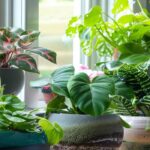Grow a Prolific Indoor Kitchen Garden
Summer is almost here if you live in the Western Hemisphere! It’s the perfect time to enjoy some homegrown produce. Even with only indoor space, you can grow a variety of vegetables by following a few essential indoor gardening tips. The best part? Fresh veggies can be harvested indoors all year, no matter where you live.
In her book, Indoor Kitchen Gardening: Turn Your Home Into a Year-Round Vegetable Garden, Elizabeth Millard shares expert insights for cultivating a range of delicious vegetables indoors.
Millard began growing produce indoors to cope with the freezing Minnesota winters. She started small, with microgreens, pea shoots, and radishes, and eventually expanded to nearly everything from mushrooms to beets. Initially, she thought indoor gardening was only for experts or required expensive equipment. But as she says, “It just takes the right mix of light, water, airflow, and attention to grow plenty of veggies indoors—it’s a lot like growing healthy houseplants.”
Millard provides advice on dealing with indoor pests and diseases and shares valuable tips for harvesting fresh produce from an indoor vegetable garden. Here’s a summary of some of her top tips.
Essentials for Growing Indoor Vegetables
To grow healthy vegetable plants indoors, certain essentials are key:
- Light: A mix of natural and artificial lighting is critical.
- Airflow: Adequate airflow is often overlooked but is essential for plant health.
- Space: Ensure plants have enough room to grow.
- Water and Drainage: Proper watering and drainage techniques are crucial.
- Humidity Control: Managing indoor humidity helps keep plants thriving.
Lighting Tips for Indoor Vegetable Growing
Millard notes that you don’t need high-cost lighting to maintain an indoor vegetable garden. Full-spectrum fluorescent bulbs work well and come in fixtures or standard lamp bulbs. Proper lighting helps plants grow robustly, produce tasty vegetables, and resist pests. Weak, spindly plants are more prone to pests and produce poor yields.
Best Crops for Indoor Growing
Millard’s book lists vegetables that are ideal for indoor growing, with a focus on good “starter” crops:
- Herbs: Rosemary, mint, parsley, lemongrass, thyme, basil, chervil, oregano, and sage.
- Leafy Greens: Arugula, spinach, and lettuce.
- Other Crops: Potatoes, tomatoes, hot peppers, pea shoots, sunflower shoots, and sprouted grains.
There’s even a section on indoor seeding, enabling gardeners to handle the entire growth process indoors.
Share Your Indoor Gardening Experience
Have you tried growing veggies indoors? Share your experiences and tell us which vegetables you’ve successfully grown and your results. We’d love to know!




